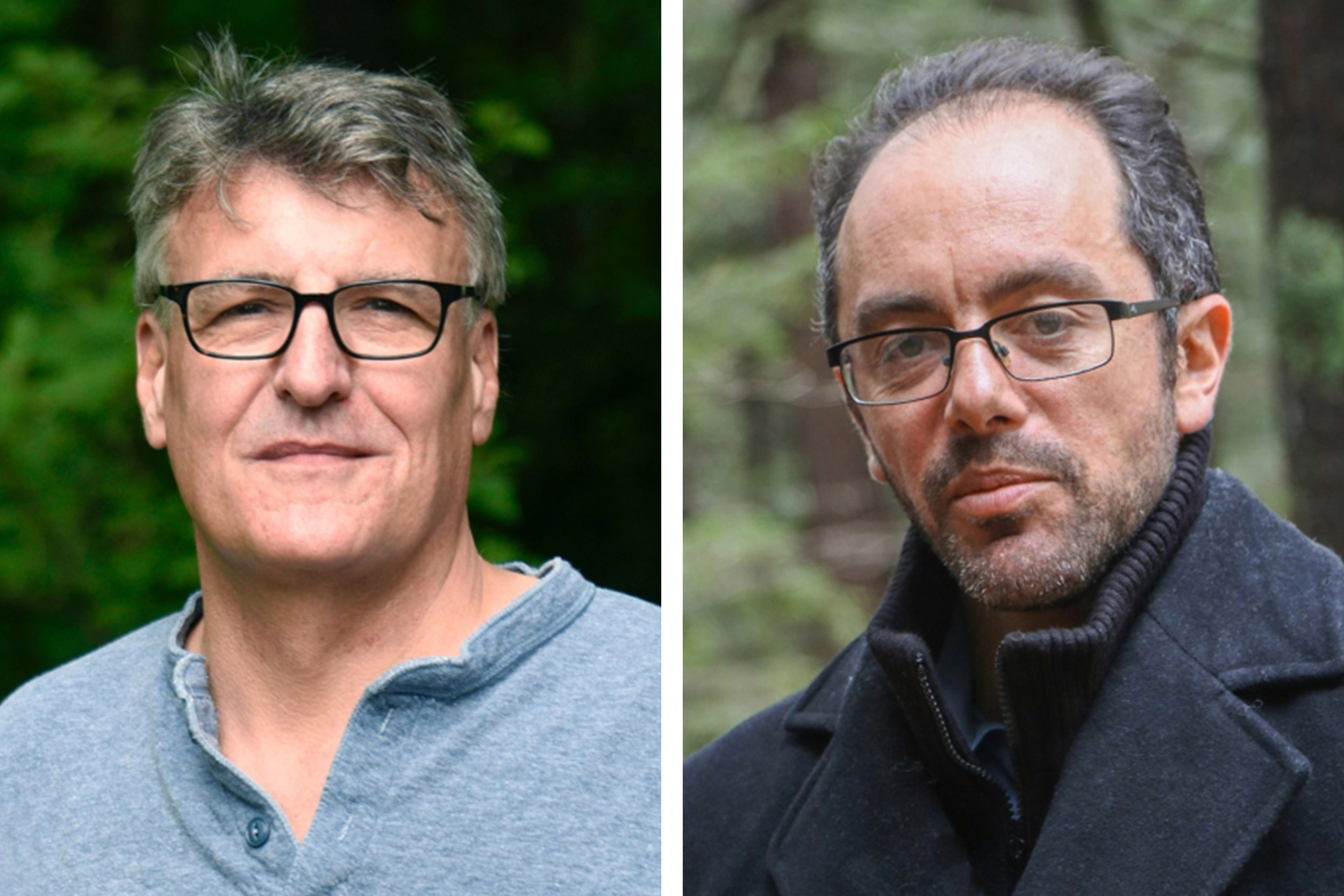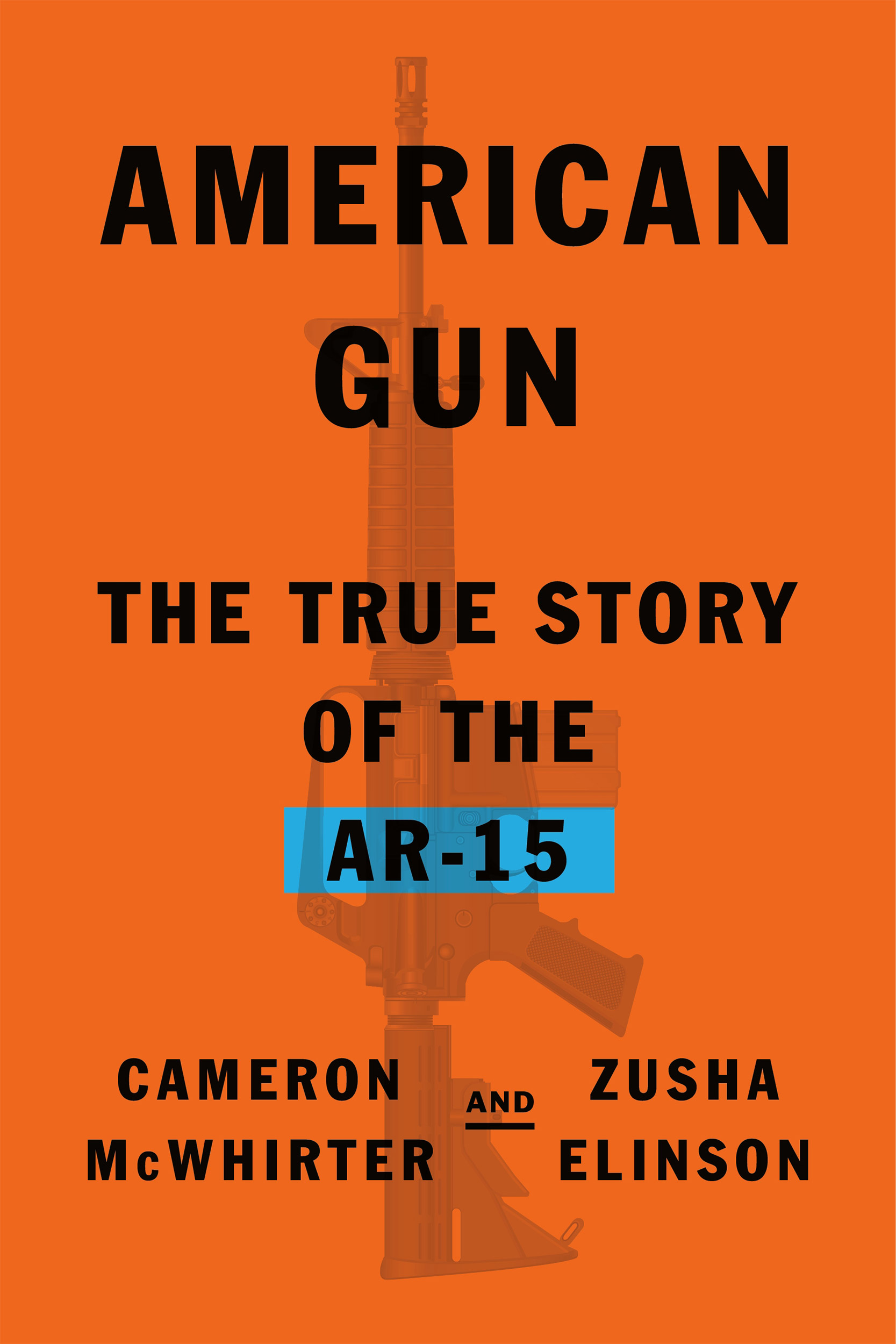
Deadly biography of AR-15
Viewed as example of American ingenuity, prized military weapon exploded in popularity, best known now as tool to kill innocent people
Excerpted from “American Gun: The True Story of the AR-15” by Cameron McWhirter, ’07 Nieman Fellow, and Zusha Elinson
He wandered the windowless casino floor from about 3:30 to 7:30 that morning, stopping to play video poker, his favorite game. The 64-year-old was a hunched six feet, pudgy and balding with sunken brown eyes and a spotty growth of white whiskers — a pasty, sullen man more comfortable with statistical probabilities than with people. He didn’t stand out on that Sunday, October 1, 2017. It wasn’t strange to see a disheveled man shuffling alone past rows of the bright baby-blue, ruby-pink, and neon-green machines that produced a cacophony of pings, bings, and cha-chings. This was Vegas, and he was just another lost soul. Video poker was his game because he felt he had mastered the machines. Stephen Paddock believed he was better than other video poker players because he had studied the probabilities of winning and losing. That morning he played out of habit. He no longer cared whether he won. It didn’t matter anymore.
Paddock returned to his suite in the Mandalay Bay hotel. Elevators carried him 32 floors above the city. The upper-floor suites commanded grand views, from the south end of the famous Strip out to the desert mountains ringing the city. Paddock’s multiple rooms, called a “Vista Suite” by the hotel, looked down on Las Vegas Boulevard, and beyond to the black-glass pyramid of the Luxor hotel and casino. Across the boulevard’s six lanes was a large venue for concerts and festivals called Las Vegas Village.
For days, Paddock had driven his black 2017 Chrysler Pacifica minivan back and forth between his home in nearby Mesquite, Nevada, and the Mandalay Bay. Each time, he had brought more suitcases and bags. Sometimes bellboys helped him, wheeling carts stacked with his bags to the larger service elevators. They chatted and laughed, and Paddock tipped them. Early in the afternoon on October 1, Paddock brought two rolling suitcases and a bag to his suite, riding in an elevator alone. He called for room service, then set up a small video camera on a room-service cart out in the hallway to monitor any movement from a laptop in his suite. He used power tools to install a metal bracket that blocked the stairwell door in the hallway. He had a hammer to break window glass when the time came. He brought a scuba mask to help him deal with smoke or tear gas when police responded.

Paddock unzipped his bags and took out 14 AR-15 semiautomatic rifles and eight similar guns called AR-10s. He had dozens of fully loaded hundred-round magazines. The rifles were civilian versions of guns invented in the 1950s by a tiny company in Hollywood, California. The company created a revolutionary rifle for the U.S. military. It was a light, easy-to-use weapon to help soldiers fight Communist insurgencies in the developing world. The futuristic rifles were designed to achieve a simple goal: fire a lot of bullets fast to kill or maim as many enemy soldiers as possible. The design was shaped by a military adage: whoever shoots the most lead wins.
By nighttime, Paddock arrayed the guns so he could pick them up in succession from the beds and the purple and white furniture near two floor-to-ceiling windows. To most of the rifles he attached bump stocks, devices allowing the semiautomatic guns to mimic automatic fire. Down below, a country music festival was taking place at Las Vegas Village. About twenty-two thousand people crowded before a large stage to hear the musician Jason Aldean. Paddock likely couldn’t hear it. He’d stuffed tissue in his ears to drown out the loud noises he was about to make.

At 10:05 p.m. Paddock, dressed in a brown shirt and black pants, lifted an AR-15 to his shoulder. He aimed downward. Aldean was playing a slow love song called “When She Says Baby.” Fans swaying to the music thought they heard fireworks, far off. Then they saw people falling. Everyone started running but no one knew where to hide. The bullets rained down in the darkness. In about 10 minutes, Paddock fired 1,057 bullets. He killed 58 people that night and wounded 413 others. Another 456 were injured trying to escape the mayhem. An aging, overweight gambler who found sex exhausting killed more people in a mass shooting than any other individual in U.S. history. The AR-15 rifles had made the ghoulish feat easy. No one could explain why he wanted to kill so many people — not his girlfriend, not his brothers, not the Federal Bureau of Investigation. Paddock, who had become wealthy by investing in real estate, spent nearly $95,000 on guns, ammo, and accessories in the year leading up to the massacre. In addition to his semiautomatic rifles, Paddock brought along two other guns but fired only one of them, a Smith & Wesson .38 revolver. He used it to shoot himself in the head. Near his body, police found a lined sheet of paper on which Paddock had scribbled calculations of how much a bullet fired from an AR-15 would drop in its arc after 500 yards. He wanted to make sure his shots would hit concertgoers. Statistical probabilities to the end.
Stephen Paddock, who grew up in Los Angeles, was born in 1953. A year later a company called ArmaLite with just a handful of employees began operations about 15 miles away in a one-story brick building on Santa Monica Boulevard in Hollywood. The brain of this tiny outfit was Eugene Stoner, a soft-spoken, persistent, and brilliant man in his thirties. Some called him Gene, but most people, even his wife and children, called him Stoner. One of his inventions, ArmaLite’s 15th creation, hence its designation AR-15, would make him one of the most famous gun designers of the 20th century, perhaps any century.
The consequences of the AR-15’s creation have coursed through our society and politics for generations in ways the weapon’s inventor and promoters never foresaw. The gun has been used in conflicts far beyond U.S. borders, first and foremost when the select-fire version, the M16, was carried by U.S. troops and allies in Southeast Asia. The gun has played a key role in other conflicts as well, including the Troubles in Northern Ireland, the civil war in Colombia, and the drug wars in Mexico. Terrorists, death squads, and drug traffickers continue to use the weapon with deadly effect in Latin America and elsewhere.
How did the weapon American soldiers carried in Vietnam become best known for killing schoolchildren? The inventor created the gun with a simple goal: build a better rifle for the U.S. military and its allies during the Cold War. He wanted to protect the country he loved. But now, his invention is more well-known as a tool to kill innocent Americans.
This story involves presidents from Eisenhower to Biden, bickering generals, schmoozy businessmen, exploding watermelons, a renegade spy, desperate soldiers, cop-killing gang members, bullet-riddled goats, cult leaders, partisan senators, a tap dancer turned gunmaker, a gun-obsessed hedge-fund king, mercenary admen, a brigade of lobbyists, political extremists, disturbed killers, and victims — those who’ve died and those who must spend their lives wounded and struggling.
Americans no longer feel safe. Everyday activities such as going to school and clocking into work are informed by the fear of mass shootings. Kindergartners are drilled on how to avoid being shot by attackers armed with AR-15s. Companies have tightened security and beefed up mass-shooter training. Jittery movie- and concertgoers scan for exits. Police departments from the largest cities to the smallest towns issue military-grade body armor able to withstand the high-velocity rounds from an AR-15.
Something has to change, and true change has to focus on the core issue: How do we as a society keep this weapon out of the hands of people who shouldn’t have such a gun? Solutions will require trial-and-error efforts, patience, compromise, and abandonment of fiercely held positions.
This is the extraordinary story of the AR-15 rifle, the American gun.
Published by Farrar, Straus and Giroux, September 26, 2023. Copyright © 2023 by Cameron McWhirter and Zusha Elinson. All rights reserved.





